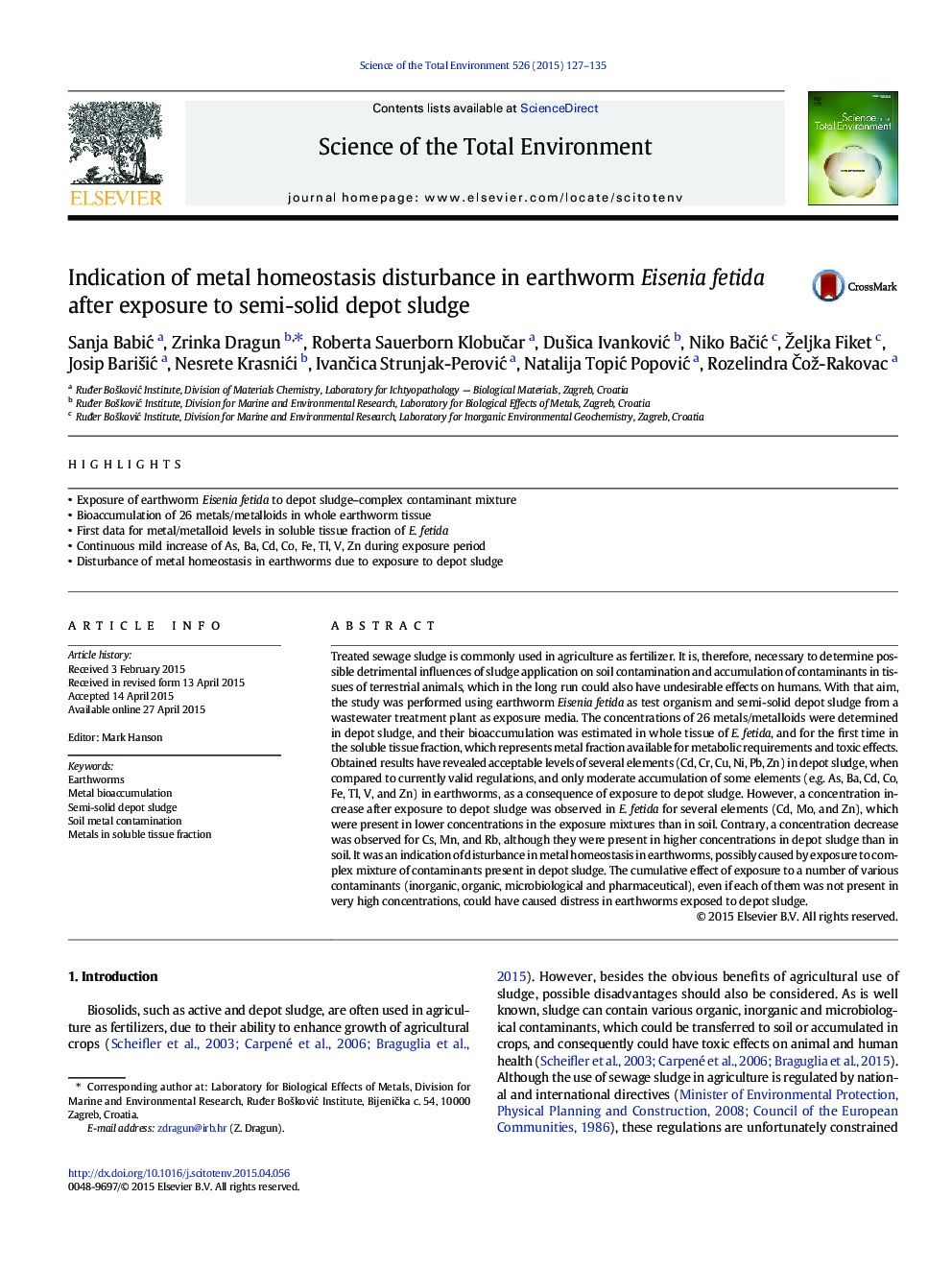| Article ID | Journal | Published Year | Pages | File Type |
|---|---|---|---|---|
| 4428362 | Science of The Total Environment | 2015 | 9 Pages |
•Exposure of earthworm Eisenia fetida to depot sludge–complex contaminant mixture•Bioaccumulation of 26 metals/metalloids in whole earthworm tissue•First data for metal/metalloid levels in soluble tissue fraction of E. fetida•Continuous mild increase of As, Ba, Cd, Co, Fe, Tl, V, Zn during exposure period•Disturbance of metal homeostasis in earthworms due to exposure to depot sludge
Treated sewage sludge is commonly used in agriculture as fertilizer. It is, therefore, necessary to determine possible detrimental influences of sludge application on soil contamination and accumulation of contaminants in tissues of terrestrial animals, which in the long run could also have undesirable effects on humans. With that aim, the study was performed using earthworm Eisenia fetida as test organism and semi-solid depot sludge from a wastewater treatment plant as exposure media. The concentrations of 26 metals/metalloids were determined in depot sludge, and their bioaccumulation was estimated in whole tissue of E. fetida, and for the first time in the soluble tissue fraction, which represents metal fraction available for metabolic requirements and toxic effects. Obtained results have revealed acceptable levels of several elements (Cd, Cr, Cu, Ni, Pb, Zn) in depot sludge, when compared to currently valid regulations, and only moderate accumulation of some elements (e.g. As, Ba, Cd, Co, Fe, Tl, V, and Zn) in earthworms, as a consequence of exposure to depot sludge. However, a concentration increase after exposure to depot sludge was observed in E. fetida for several elements (Cd, Mo, and Zn), which were present in lower concentrations in the exposure mixtures than in soil. Contrary, a concentration decrease was observed for Cs, Mn, and Rb, although they were present in higher concentrations in depot sludge than in soil. It was an indication of disturbance in metal homeostasis in earthworms, possibly caused by exposure to complex mixture of contaminants present in depot sludge. The cumulative effect of exposure to a number of various contaminants (inorganic, organic, microbiological and pharmaceutical), even if each of them was not present in very high concentrations, could have caused distress in earthworms exposed to depot sludge.
